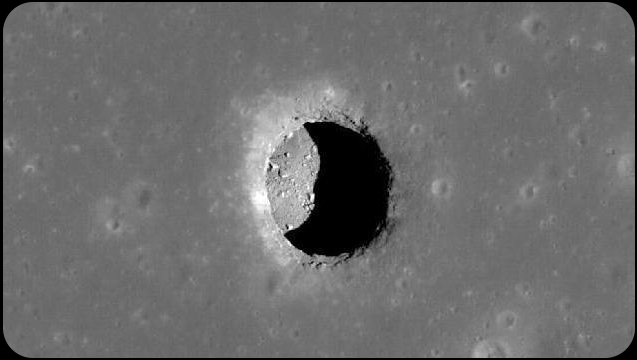EVIDENCE FOR A HOLLOW MOON
Recent lunar explorations have uncovered intriguing evidence suggesting
the existence of a sizable cave accessible from the deepest known pit
on the moon. This discovery, located at least 100 meters deep in the
Sea of Tranquility, is particularly fascinating given its
proximity—just 400 kilometers—from Apollo 11's historic landing site.
The presence of this pit, one of over 200 similar features identified
on the lunar surface, contributes to the growing body of evidence that
supports the theory of a potentially hollow moon.

These pits, also referred to as lunar pits, are essentially large,
cylindrical openings that appear to lead into vast underground
cavities. The discovery of these formations challenges our
understanding of the moon's geology and opens up new avenues for
exploration and study.
One of the most compelling
aspects of this discovery is the potential implications for alien
colonization. Moreover, the existence of these caves suggests that the
moon's interior may be more complex than previously thought.
Traditionally, the moon was believed to have a relatively simple
structure: a solid crust, mantle, and core. However, the discovery of
extensive underground cavities hints at the possibility of large-scale
voids within the lunar crust. This has led some scientists to revisit
the hollow moon hypothesis, a fringe theory that suggests the moon
might be partially hollow or contain extensive caverns beneath its
surface.
The hollow moon hypothesis, while
controversial, is rooted in some intriguing observations. For instance,
seismic data from moonquakes and impact events have shown that the moon
rings like a bell for extended periods, suggesting a highly fractured
and possibly hollow interior. Additionally, the uniform distribution of
mass within the moon, despite its irregular shape, raises questions
about its internal structure.
|